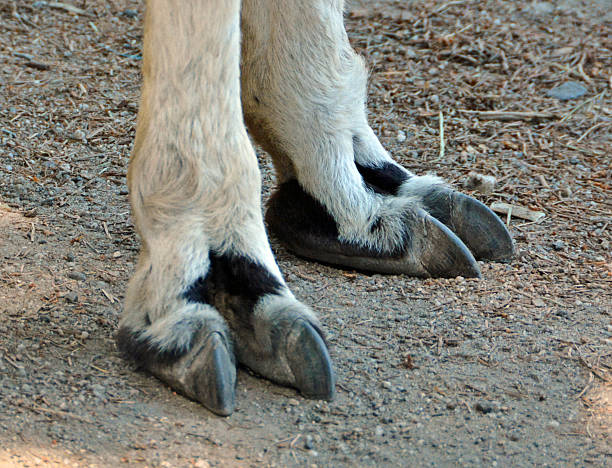
Llamas and Alpacas seldom have problems associated with their feet. They normally walk on their middle and distal (furthest out) bones in their feet, called phalanges. These are anatomically equivalent to the bones of the middle part and tip of our fingers. The toenail surrounds and protrudes from the tip of each distal phalanx. The pad on the bottom of the foot resembles a dog’s footpad but is much tougher. Lameness or limping is an indication of pain or mechanical problems in an animal’s legs.
Among the most common causes of lameness are foot problems. Either the nails are too long or damaged, or bruises, cracks, cuts, or infection of footpad. Other causes may be ankle sprain or an injury higher up the leg.
Toenail Trimming
Llama and Alpaca’s toenails grow continuously throughout their lives. Llama and Alpacas that reside in hard rocky ground in the mountains of Peru, Chili and Bolivia will naturally wear their toenails short. Llama and Alpacas in North America generally are more sedentary and have less area to exercise or live on soft ground. As a result, their toenails tend to grow longer. Long toenails may curve causing the toe to twist. This will pinch the pad and eventually it will break off painfully, causing lameness. To void these problems, toenail trimming should be a part of routine care.
Start at the back edges of each nail and work forward towards the point. Be careful not to cut in the edge of the pad since cuts will bleed and expose the animal to the risk of infection. If you are a beginner, be conservative and leave more toenail as a margin for error. As you become more experienced you will find it very easy to trim your animal’s nails short without hurting them. When trimming the inside of the toenail, it helps to spread the toes apart with your fingers to allow more space for your nail clippers. Once you have trimmed both sides of the nail, remove the point with one final cut perpendicular to the line of the nail. Long curved nails may cause the animal’s entire toe to twist uncomfortably. One trimming may not be enough to allow the toe and nail to grow straight. It will be important to trim this animal’s nails regularly, at least once a month until the toes and the nails remain straight.
When the edge of a toenail has folded under to press on the pad, do not try to unfold it and cut it off. Trim the surrounding nail and then gently unfold the folded part of the nail as far as possible without causing the nail to break off. Trim the nail back with several cuts to avoid cutting into the quick. Trim every 2-3 weeks until it returns to normal. If you accidentally cut into the quick and cause some bleeding, finish trimming the nail, then if it has not stopped bleeding, apply direct pressure to the area until it does. Pouring some 7% Iodine over the area will also help to stop the bleeding and will act as a disinfectant. Watch the Alpaca over the next few days in case an infection or lameness develops.



Comment here